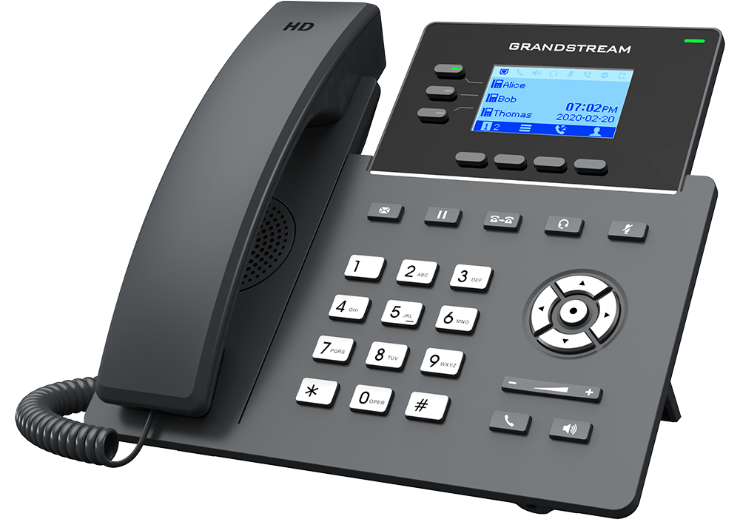SIP Trunking Basics
We get the opportunity to talk to telco dealers and IT consultants about SIP trunking every day. Some of our resellers are very experienced with SIP and VoIP solutions, but many are just new to the approach and looking for ways to grow their business and hold onto customers who are looking for digital voice solutions. If you are new to SIP, here are some of the most important things to know.
What is SIP Trunking?
SIP trunking is a method of delivering telephone and other unified communications services over the internet. It works with a SIP-enabled PBX (private branch exchange). SIP stands for Session Initiation Protocol and it is the communications protocol for signaling and controlling multimedia communication sessions. SIP trunking replaces traditional telephone lines or PRIs (Primary Rate Interface).
Before SIP, voice calls were carried over the Public Switched Telephone Network (PSTN), the copper phone lines we traditionally associate with the “telephone.” The PSTN is a physical, circuit switch network, which requires a physical connection between two points in order for a call to take place.
SIP trunks, on the other hand, are virtual phone lines that allow you to make and receive phone calls over the internet to anyone in the world with a phone number whether they are using VoIP or the PSTN. SIP trunks utilize a packet switch network, where your voice calls are broken down into digital packets and routed across a network to its final destination.


SIP Channels
Each SIP trunk can support a number of SIP channels. A SIP channel is the capability to support one incoming or outgoing call. You can think of SIP channels as the lanes for your highway. Each call takes up exactly one lane. Because a SIP trunk can hold an unlimited number of channels, you only need one SIP trunk. The number of channels you need will depend on how many concurrent calls your business tends to make. SIP channels are sometimes called sessions, lines or concurrent calls. They are similar in practice to a traditional telephone line.
SIPTRUNK offers your customers the option of subscribing to a set number of SIP channels with an unlimited number of minutes in the lower 48 US states and most of Canada for a monthly per channel fee, or they can choose a bundle of minutes that can be used over any number of channels.
SIP trunks, on the other hand, are virtual phone lines that allow you to make and receive phone calls over the internet to anyone in the world with a phone number whether they are using VoIP or the PSTN. SIP trunks utilize a packet switch network, where your voice calls are broken down into digital packets and routed across a network to its final destination.
SIP vs. VoIP (Voice over Internet Protocol)
Although SIP and VoIP are sometimes used interchangeably, they are not the same thing. The term VoIP stands for Voice Over Internet Protocol. It is a broad term that covers any phone calls made over the Internet. It includes a group of protocol technologies of which SIP is an example. In short, SIP is one of the specific protocols that enable VoIP.
Voice Codecs
Codecs convert audio signal (voice) into compressed digital form for transmission. When the signal reaches its destination, the codec converts it to uncompressed audio signal for replay. It’s what makes VoIP possible. Different codecs have different levels of compression. The highly compressed signals require less internet bandwidth, while less compression is associated with clear voice quality. The two most popular for SIP trunking are G.711 and G.229. G.711 provides uncompressed high-quality voice, while G.729 is compressed so that it uses less bandwidth at the sacrifice of quality.


Call Quality
Excellent voice quality is essential for any business communication system. With the right solution and proper router configuration in place, SIP calls can be indistinguishable from calls made over traditional telephone lines. It is essential to choose a provider, like SIPTRUNK that uses only Tier-1 carrier networks. You should also ensure that your customer has enough internet bandwidth to support the expected number of concurrent calls.
Quality of Service (QoS)
When using the internet for voice calls, the data and voice networks become one. QoS stands for Quality of Service. It is a router setting that tells the network to give priority to voice calls. Minor delays in the signal reaching the network, or a small amount of data loss isn’t even noticeable to users consuming data, but it can create a terrible experience for voice calls. The QoS setting ensures that audio quality will remain fantastic even while activities that consume a lot of data, like streaming video or downloading large files are going on.
The Benefits for Customers
While there are many benefits of SIP for your customers, the primary one is lower communications cost. Whether your customer chooses an unlimited SIP trunk that includes most local and long-distance calls to the United States and Canada, or they go with a plan that includes a bundle of minutes, you can be sure that they will save money vs. the traditional approach. We also sell our solution in a way that is much more flexible and customizable for business. Your customers can purchase only what they need now and easily grow or retract at any time.
Additional benefits include built-in disaster recovery features, network consolidation, and the ability to take advantage of Unified Communications capabilities such as video, instant messaging, and presence.


Implementation
SIPTRUNK provides easy to understand set up instructions and a user-friendly online control panel for day-to-day management. You’ll be able to get your customers up and running quickly and provide first level support. Our support representatives are also happy to help you with any questions that come up and work with you to troubleshoot technical issues.
You don’t need to be a telephony guru to resell SIP services. With some basic background and the help of a strong partner like SIPTRUNK, you’ll be able to develop a monthly recurring revenue stream, grow your business, and build strong customer relationships.